Themed collection Liquid Composites

Introduction to liquid composites
Michael Bartlett and Robert Style introduce the Soft Matter themed collection on liquid composites.

Soft Matter, 2020,16, 5799-5800
https://doi.org/10.1039/D0SM90113J
Switchable adhesion of soft composites induced by a magnetic field
Magnetically-switchable adhesion of a two-phase composite to non-magnetic objects is achieved by magnetically addressing the material dissipative properties.
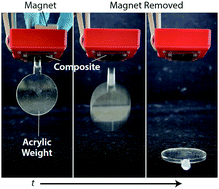
Soft Matter, 2020,16, 5806-5811
https://doi.org/10.1039/D0SM00626B
Oxide-mediated mechanisms of gallium foam generation and stabilization during shear mixing in air
The fracturing and incorporation of liquid gallium surface oxides during shear mixing in air enables the stabilization of air bubbles within gallium which leads to the formation of a room-temperature liquid metal foam.
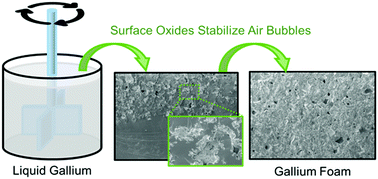
Soft Matter, 2020,16, 5801-5805
https://doi.org/10.1039/D0SM00503G
Gallium oxide-stabilized oil in liquid metal emulsions
Mixing of liquid metal (LM) foam with low viscosity silicone oil creates stable and high thermal conductivity oil-in-LM emulsions. A thin film on the emulsion's exterior inhibits gallium induced aluminum embrittlement.
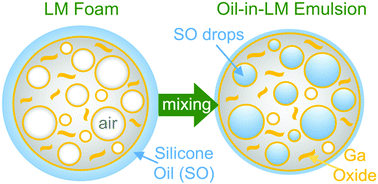
Soft Matter, 2021,17, 8269-8275
https://doi.org/10.1039/D1SM00982F
Mechanical properties of 2D aggregates of oil droplets as model mono-crystals
We investigate the elastic and yielding properties of two dimensional defect-free mono-crystals made of highly monodisperse droplets.
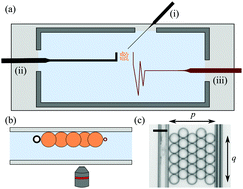
Soft Matter, 2021,17, 1194-1201
https://doi.org/10.1039/D0SM01165G
Fundamentals of soft thermofluidic system design
The behaviour of a soft thermofluidic system, made of a liquid metal silicone composite, undergoing large scale transient stretching is studied. With a time scale analysis, transient regimes and the limits of quasi-static assumptions are explored.
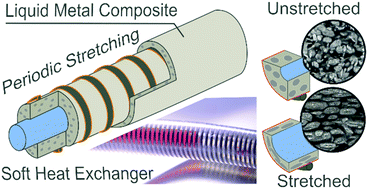
Soft Matter, 2020,16, 6924-6932
https://doi.org/10.1039/D0SM00504E
Modeling of surface mechanical behaviors of soft elastic solids: theory and examples
We study a general formulation in which the surface can support large deformation and carry both surface stresses and surface bending moments.
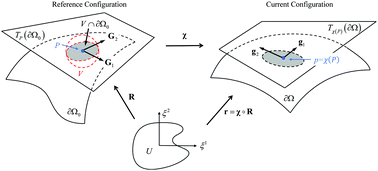
Soft Matter, 2020,16, 6875-6889
https://doi.org/10.1039/D0SM00556H
3D aggregation of cells in packed microgel media
In both natural and applied contexts, investigating cell self-assembly and aggregation within controlled 3D environments leads to improved understanding of how structured cell assemblies emerge, what determines their shapes and sizes, and whether their structural features are stable.

Soft Matter, 2020,16, 6572-6581
https://doi.org/10.1039/D0SM00517G
Direct write printing of a self-encapsulating liquid metal–silicone composite
Silicone composites featuring inclusions of liquid metal particles are soft and stretchable materials with useful electric, dielectric, mechanical, and thermal properties.
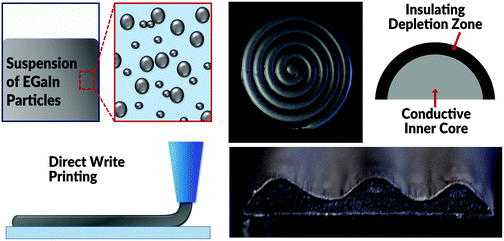
Soft Matter, 2020,16, 6608-6618
https://doi.org/10.1039/D0SM00803F
Dimerization and structure formation of colloids via capillarity at curved fluid interfaces
We probe colloidal organization by considering the interactions of the overlapping distortions of colloids on a curved interface.
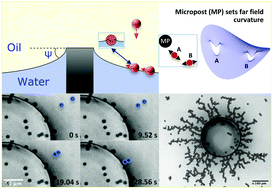
Soft Matter, 2020,16, 5861-5870
https://doi.org/10.1039/D0SM00557F
Theory of droplet ripening in stiffness gradients
We present a numerical and analytical analysis of elastic ripening, where droplets embedded in an elastic matrix are biased towards softer regions.
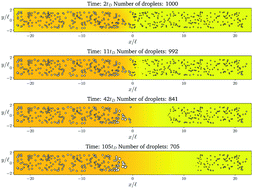
Soft Matter, 2020,16, 5898-5905
https://doi.org/10.1039/D0SM00182A
Elastic stresses reverse Ostwald ripening
When liquid droplets grow in a polymer network, compressive stresses from the network can reverse the direction of Ostwald ripening.
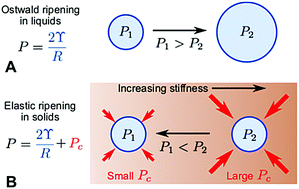
Soft Matter, 2020,16, 5892-5897
https://doi.org/10.1039/D0SM00628A
Impurity effects in thermal regelation
When a particle is placed in a material with a lower bulk melting temperature, intermolecular forces can lead to the existence of a “premelted” liquid film of the lower melting temperature material.
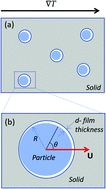
Soft Matter, 2020,16, 5886-5891
https://doi.org/10.1039/D0SM00558D
Size of liquid metal particles influences actuation properties of a liquid crystal elastomer composite
A shape-morphing composite exhibits tunable actuation properties (stroke and force output) that are influenced by liquid metal particle size.
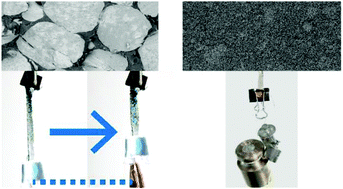
Soft Matter, 2020,16, 5878-5885
https://doi.org/10.1039/D0SM00278J
Capillary-driven indentation of a microparticle into a soft, oil-coated substrate
The contact between a small glass microsphere and an oil-coated soft PDMS substrate is investigated using confocal microscopy.
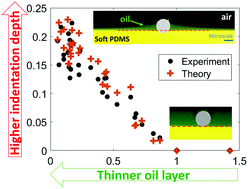
Soft Matter, 2020,16, 5812-5818
https://doi.org/10.1039/D0SM00296H
Investigation of thermal conductivity for liquid metal composites using the micromechanics-based mean-field homogenization theory
Micromechanics-based mean-field homogenization models estimate the thermal conductivity of liquid metal composites along the dependency on liquid inclusion concentrations and strains.
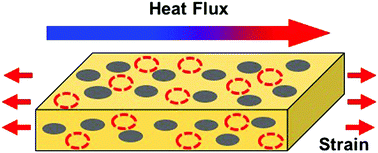
Soft Matter, 2020,16, 5840-5847
https://doi.org/10.1039/D0SM00279H
Uniform conductivity in stretchable silicones via multiphase inclusions
A thin, stretchable (200% linear strain), multiphase (solid–liquid) silicone composite with uniform electrical conductivity, for Joule heating and high-deformation sensing.

Soft Matter, 2020,16, 5827-5839
https://doi.org/10.1039/D0SM00383B
Crystallization at droplet interfaces for the fabrication of geometrically programmed synthetic magnetosomes
A strategy applicable to the synthesis of artificial magnetosomes with programmable magnetic domains is described. The magnetic domains are polarized and thus readily manipulated using magnetic fields or assembled using droplet–droplet interactions.
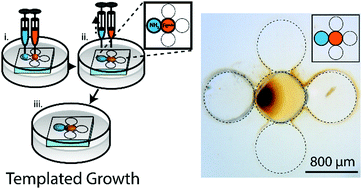
Soft Matter, 2020,16, 5819-5826
https://doi.org/10.1039/D0SM00410C
A fluidic demultiplexer for controlling large arrays of soft actuators
This work proposes a soft microfluidic demultiplexer as a potential control system for soft robotics.
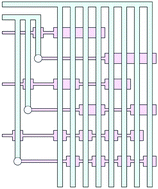
Soft Matter, 2020,16, 5871-5877
https://doi.org/10.1039/C9SM02502B
Nature inspired solid–liquid phase amphibious adhesive
Here we report a new class of bio-inspired solid–liquid adhesive, obtained by simple mechanical dispersion of PVDF (polyvinylidene fluoride) (solid spheres) into PDMS (polydimethylsiloxane) (liquid).
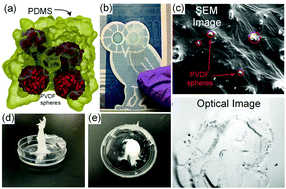
Soft Matter, 2020,16, 5854-5860
https://doi.org/10.1039/D0SM00105H
Fabrication of solvent transfer-induced phase separation bijels with mixtures of hydrophilic and hydrophobic nanoparticles
Solvent transfer-induced phase separation bijels with oils of different polarity are fabricated by using a mixture of hydrophilic and hydrophobic silica nanoparticles, further expanding their potential applications in separation and catalysis.
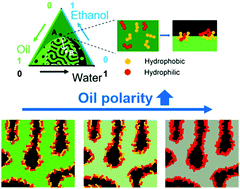
Soft Matter, 2020,16, 5848-5853
https://doi.org/10.1039/D0SM00071J
Aggregation in viscoelastic emulsion droplet gels with capillarity-driven rearrangements
Experiments and simulations show that arrested coalescence and capillarity-induced restructuring control the shapes of two-dimensional droplet aggregates.
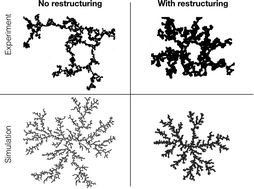
Soft Matter, 2020,16, 5506-5513
https://doi.org/10.1039/C9SM02134E
Autonomous analysis to identify bijels from two-dimensional images
Experimental parameters alone cannot predict whether a bijel will form. A machine learning tool can help classify bijel images.

Soft Matter, 2020,16, 2565-2573
https://doi.org/10.1039/C9SM02187F
Viability of Lactobacillus rhamnosus GG microencapsulated in alginate/chitosan hydrogel particles during storage and simulated gastrointestinal digestion: role of chitosan molecular weight
Chitosan coating improves the long-term stability of sodium alginate hydrogel particles but not the viability of encapsulated probiotics.
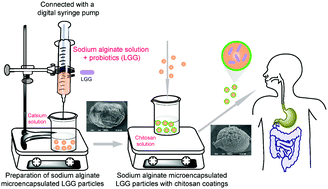
Soft Matter, 2020,16, 1877-1887
https://doi.org/10.1039/C9SM02387A
PDMS polymerized high internal phase emulsions (polyHIPEs) with closed-cell, aqueous-filled microcavities
Elastomeric polyHIPE with aqueous encapsulations.
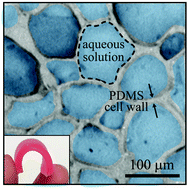
Soft Matter, 2019,15, 9665-9675
https://doi.org/10.1039/C9SM01732A
About this collection
This collection, guest-edited by Michael Bartlett (Iowa State University) and Robert Style (ETH Zürich) will focus on exciting advances involving soft materials with a liquid component. In particular, it will involve contributions on materials that use liquid components to achieve new mechanical properties and functional responses, and on the use of liquids to create novel materials. We especially encourage submissions in the fields of: liquids embedded in solids, phase separation, 3D printing, soft electronics, soft robotics, wet granular materials, food science and emulsion/foam systems.